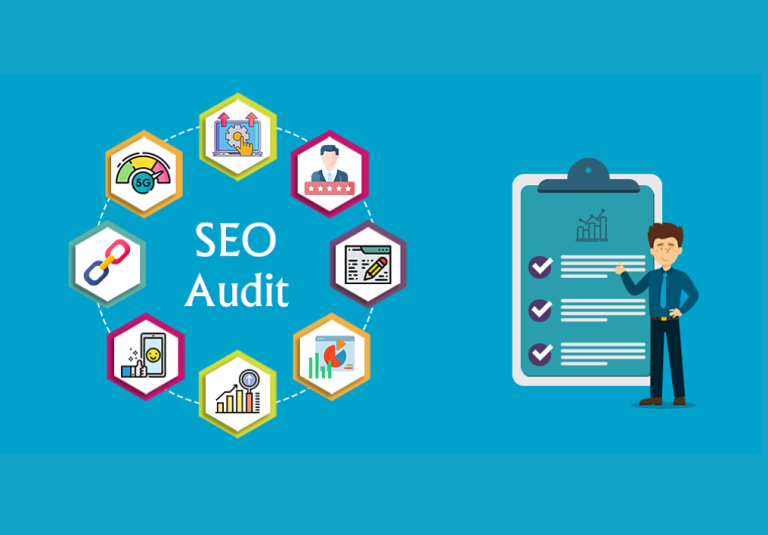Conducting a detailed SEO audit is essential for evaluating your website’s current performance and identifying areas that need improvement. It allows you to uncover technical problems, on-page optimization opportunities, and content gaps that could be preventing your site from achieving higher rankings. Whether you’re an experienced marketer or just starting, this guide will provide a step-by-step approach to analyzing and optimizing your website for better search visibility.
What is an SEO Audit?
An SEO audit is a methodical evaluation of your website’s performance in search engines. It involves reviewing various aspects, including technical SEO, content quality, keyword usage, backlink health, and user experience. The primary goal is to ensure your website adheres to search engine guidelines and provides a seamless experience for visitors.
Why is an SEO Audit Important?
- Boosts Rankings: Resolving SEO issues can improve your site’s visibility in search results.
- Enhances User Experience: Ensures your website is fast, responsive, and easy to navigate.
- Increases Organic Traffic: Optimized websites attract more relevant and quality traffic.
- Prepares for Algorithm Changes: Regular audits help you stay updated with evolving search engine algorithms.
Step-by-Step Guide to Conducting an SEO Audit
1. Assess Website Performance
Begin by evaluating the overall health of your website. Utilize tools like Google Analytics, Google Search Console, or SEMrush to gather insights on performance metrics.
- Analyse Traffic Sources: Identify where your visitors are coming from and highlight top-performing pages.
- Review Bounce Rate: A high bounce rate may signal poor user experience or irrelevant content.
- Optimize Organic Keywords: Determine which keywords are driving traffic and refine underperforming ones.
2. Conduct a Technical SEO Analysis
Technical SEO is the backbone of your website’s search engine performance.
Key Focus Areas:
- Crawlability: Ensure search engines can effectively access your website. Tools like Screaming Frog can identify crawl errors, broken links, and orphaned pages.
- XML Sitemap: Confirm your sitemap is properly configured and submitted to search engines.
- Robots.txt: Check that your robots.txt file isn’t inadvertently blocking important pages.
- Page Speed: Use Google PageSpeed Insights to analyze and improve loading times by compressing images, minimizing CSS/JavaScript, and enabling browser caching.
- Mobile Optimization: Test your site’s responsiveness using Google’s Mobile-Friendly Test. Make sure it adapts seamlessly to different devices.
- HTTPS Security: Secure your website with an SSL certificate to protect user data and establish trust.
3. Review On-Page SEO
On-page SEO affects how search engines interpret and rank your content.
Steps to Optimize:
- Meta Tags: Ensure all pages have unique, keyword-optimized meta titles and descriptions.
- Header Tags: Use H1, H2, and H3 tags to structure content and incorporate relevant keywords.
- Content Quality: Audit content for relevance, accuracy, and readability. Tools like Grammarly can help refine grammar and ensure alignment with user intent.
- Keyword Placement: Strategically integrate keywords in titles, headers, and throughout the content without overstuffing.
- Internal Linking: Improve navigation and authority by linking to relevant pages on your site.
- Image Optimization: Add descriptive alt tags to images and compress them for faster loading times.
4. Evaluate Backlink Profile
Backlinks are a key factor in search engine rankings. Analyzing your backlink profile can provide insights into its quality and effectiveness.
What to Analyze:
- Link Quality: Tools like Ahrefs or Moz can help identify authoritative and spammy backlinks. Disavow harmful links to protect your site’s ranking.
- Anchor Text Variety: Ensure backlinks use diverse, relevant anchor text.
- Competitor Backlinks: Study your competitors’ backlink strategies and identify opportunities to replicate high-quality links.
5. Audit Content Performance
Content is the cornerstone of any effective SEO strategy.
Steps to Take:
- Update Older Content: Revise outdated posts with new information, keywords, and visuals.
- Fill Content Gaps: Use tools like SEMrush to identify topics your competitors rank for but you don’t.
- Align with Search Intent: Create content tailored to users’ needs at different stages of the buying journey.
- Incorporate Multimedia: Use images, videos, and infographics to enhance engagement and improve time on page.
6. Test User Experience (UX)
User experience plays a significant role in both rankings and visitor retention.
How to Improve UX:
- Simplify Navigation: Make menus and navigation easy to use and intuitive.
- Enhance Readability: Use short paragraphs, bullet points, and sufficient white space for clarity.
- Add Clear CTAs: Place compelling calls-to-action throughout your site to guide user behavior.
- Fix 404 Errors: Redirect broken links to relevant pages to retain visitors and improve credibility.
7. Analyze Competitor Strategies
Understanding your competitors’ strategies can provide valuable insights to enhance your own.
Steps to Follow:
- Keyword Gap Analysis: Identify keywords your competitors rank for that you don’t.
- Backlink Opportunities: Locate high-quality backlinks pointing to competitors and pursue similar links.
- Content Trends: Study the type of content your competitors produce and adapt it for your audience.
8. Leverage Structured Data
Structured data improves how search engines interpret your content and can help generate rich snippets in search results.
Tips for Implementation:
- Add Schema Markup: Use structured data for products, articles, FAQs, reviews, and events.
- Validate with Tools: Test your structured data with Google’s Rich Results Test to ensure proper implementation.
9. Schedule Regular SEO Audits
SEO optimization is an ongoing process. Routine audits can help maintain performance and address issues before they escalate.
Recommended Frequency:
- Major audits: Twice a year.
- Quick reviews: Monthly.
Top Tools for SEO Audits
- Google Analytics: Track website traffic and user behavior.
- Google Search Console: Monitor crawl errors, performance, and indexing.
- Screaming Frog: Identify technical SEO issues.
- Ahrefs: Evaluate backlinks and keyword opportunities.
- SEMrush: Conduct a comprehensive analysis of keywords, content, and competitors.
Conclusion
Performing a thorough SEO audit is a critical component of any successful digital marketing strategy. By systematically evaluating your website’s technical health, content quality, backlinks, and user experience, you can identify and address issues that impact your rankings. Consistent audits and optimizations will ensure your website remains competitive and aligned with search engine best practices.
Ready to take your SEO to the next level? Contact Websoft Techno today for professional SEO services tailored to your business needs. Visit us at https://websofttechno.com/ or stop by our office at Office No 301, Third Floor, Ganga Collidium Phase 1, Ganga Dham Chowk, Market Yard, Pune – 411037. You can also reach us at +91 9922442272 | +91 9850944480. Let our experts help transform your website into a high-performing digital asset

